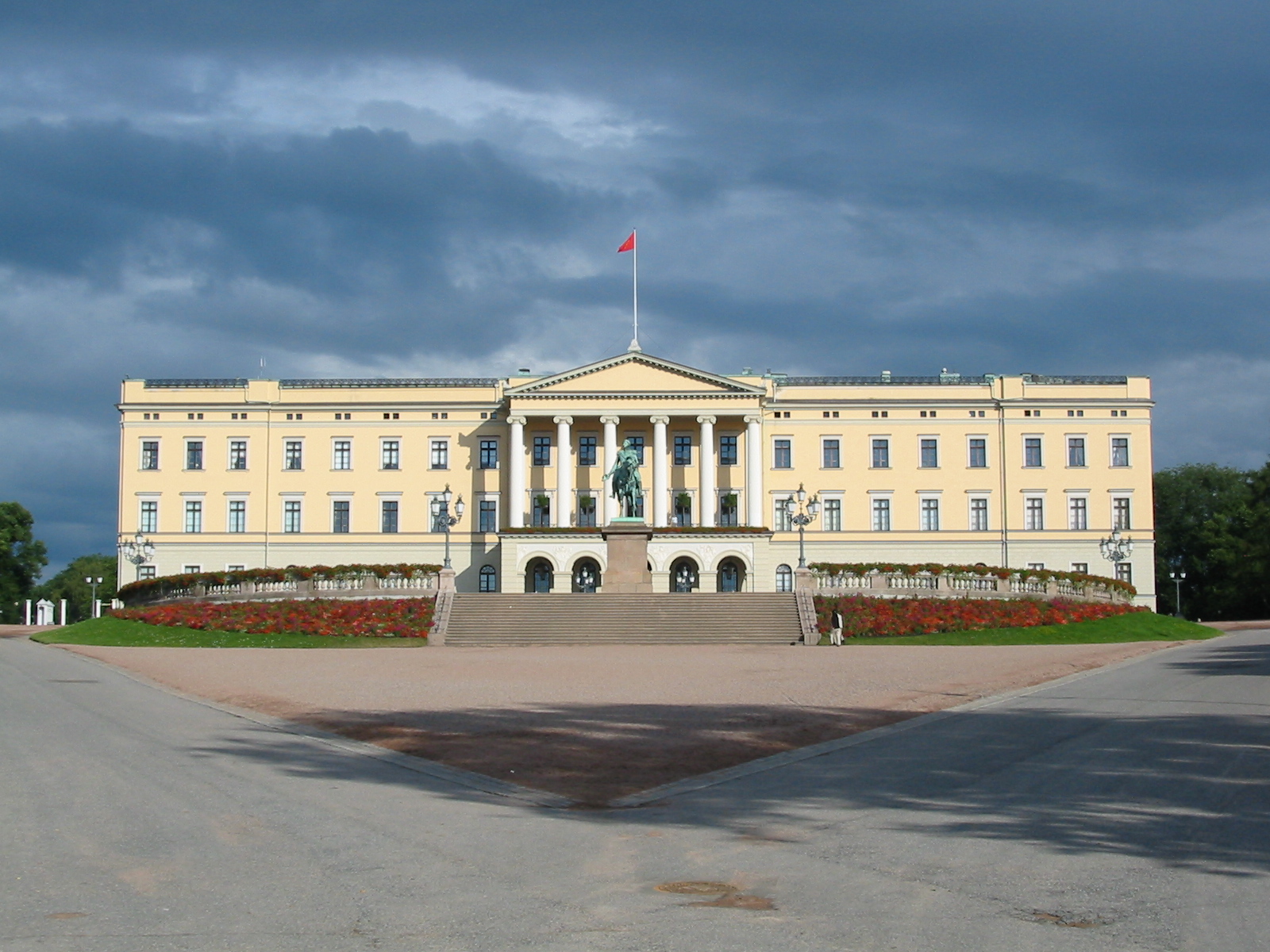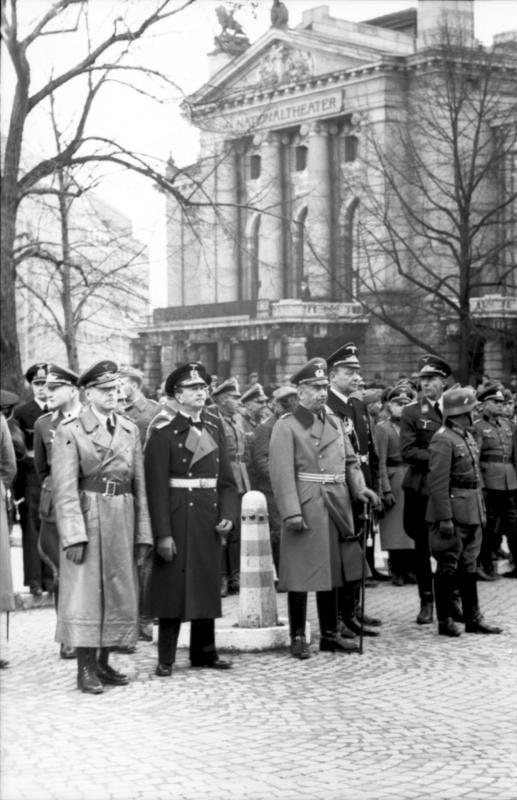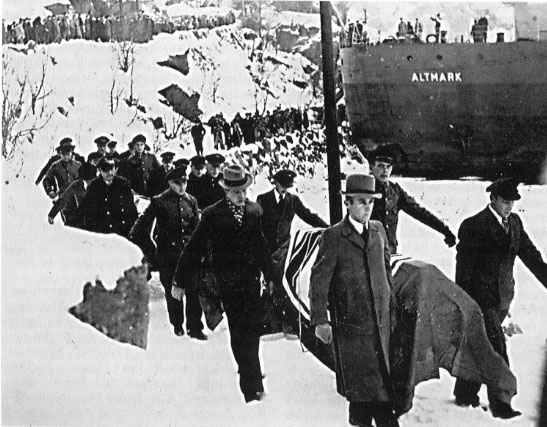|
Elverum Authorization
The Elverum Authorization ( no, Elverumsfullmakta) allowed the Cabinet of Norway to temporarily and legitimately assert absolute authority given that the Storting (the Norwegian parliament) was no longer able to convene in ordinary session in Oslo. The action was approved unanimously by the Storting in the town of Elverum on 9 April 1940, after the Norwegian Royal Family, the Cabinet, and the Storting had evacuated Oslo to evade capture by German troops in the course of Operation ''Weserübung'' during World War II. Text The authorization reads, in translated form: Significance The authorization is of historical significance because it allowed the Norwegian executive branch to ''assert'' legitimacy – even while in exile. Debate The authorization is controversial in that it constituted a complete abandonment of the legislative powers in Norway during the war. The issue was brought to the Supreme Court of Norway, which ruled that the authorization was legitimate and valid. Cr ... [...More Info...] [...Related Items...] OR: [Wikipedia] [Google] [Baidu] |
Cabinet Of Norway
The Council of State ( Norwegian: ''Statsrådet''), is a formal body composed of the most senior government ministers chosen by the Prime Minister, and functions as the collective decision-making organ constituting the executive branch of the Kingdom. The council simultaneously plays the role of privy council as well as government Cabinet. With the exception of the Prime Minister and the Minister of Foreign Affairs, who retain their ministerial ranking in their own right, all the other members of the Cabinet concurrently hold the position of ''statsråd'', meaning Councillor of State, and that of Chief of the various departments, not formally being considered 'ministers', although commonly addressed as such. The Cabinet normally convenes every week, usually on Fridays at 11:00 a.m. at the Royal Palace, Oslo, and is presided over by the Monarch. Constitutional basis Under the 1814 Constitution of Norway, the third-oldest national Constitution still in operation (afte ... [...More Info...] [...Related Items...] OR: [Wikipedia] [Google] [Baidu] |
Vidkun Quisling
Vidkun Abraham Lauritz Jonssøn Quisling (, ; 18 July 1887 – 24 October 1945) was a Norwegian military officer, politician and Nazi collaborator who nominally headed the government of Norway during the country's occupation by Nazi Germany during World War II. He first came to international prominence as a close collaborator of the explorer Fridtjof Nansen, and through organising humanitarian relief during the Russian famine of 1921 in Povolzhye. He was posted as a Norwegian diplomat to the Soviet Union and for some time also managed British diplomatic affairs there. He returned to Norway in 1929 and served as Minister of Defence in the governments of Peder Kolstad (1931–32) and Jens Hundseid (1932–33) in representing the Farmers' Party. In 1933, Quisling left the Farmers' Party and founded the fascist ''Nasjonal Samling'' (National Union). Although he gained some popularity after his attacks on the political left, his party failed to win any seats in the S ... [...More Info...] [...Related Items...] OR: [Wikipedia] [Google] [Baidu] |
1940 In Norway
Events in the year 1940 in Norway. Overview 1940 is the year when Norway became drawn into World War II. On 9 April Nazi Germany invaded the country, which remained occupied until 8 May 1945. See the article Occupation of Norway by Nazi Germany for a full exposition of World War II in Norway. Incumbents *Government in Exile (in London) – went to exile on 7 June ** Monarch – Haakon VII ** Prime Minister – Johan Nygaardsvold ( Labour Party) *German Military Governor ** Reichskommissar in Norway – Josef Terboven beginning on 24 April Events * 16 February – Altmark Incident: The British destroyer intercepts the German transport ''Altmark'' in Norwegian waters, recovering 299 British prisoners of war. * 8 April – In Operation Wilfred the United Kingdom places fictitious and real naval mine fields off the coast of Norway. The aim was to provoke a German response. ** The German troopship sinks after being torpedoed by the Polish submarine off Lillesand. * 9 April – ... [...More Info...] [...Related Items...] OR: [Wikipedia] [Google] [Baidu] |
Politics Of World War II
Politics (from , ) is the set of activities that are associated with making decisions in groups, or other forms of power relations among individuals, such as the distribution of resources or status. The branch of social science that studies politics and government is referred to as political science. It may be used positively in the context of a "political solution" which is compromising and nonviolent, or descriptively as "the art or science of government", but also often carries a negative connotation.. The concept has been defined in various ways, and different approaches have fundamentally differing views on whether it should be used extensively or limitedly, empirically or normatively, and on whether conflict or co-operation is more essential to it. A variety of methods are deployed in politics, which include promoting one's own political views among people, negotiation with other political subjects, making laws, and exercising internal and external force, including ... [...More Info...] [...Related Items...] OR: [Wikipedia] [Google] [Baidu] |
Norway In World War II
The occupation of Norway by Nazi Germany during the Second World War began on 9 April 1940 after Operation Weserübung. Conventional armed resistance to the German invasion ended on 10 June 1940, and Nazi Germany controlled Norway until the capitulation of German forces in Europe on 8 May 1945. Throughout this period, a pro-German government named Den nasjonale regjering (English: the National Government) ruled Norway, while the Norwegian king Haakon VII and the prewar government escaped to London, where they formed a government in exile. Civil rule was effectively assumed by the ''Reichskommissariat Norwegen'' (Reich Commissariat of Norway), which acted in collaboration with the pro-German puppet government. This period of military occupation is, in Norway, referred to as the "war years", "occupation period" or simply "the war". Background Having maintained its neutrality during the First World War (1914–1918), Norwegian foreign and military policy since 1933 was largely ... [...More Info...] [...Related Items...] OR: [Wikipedia] [Google] [Baidu] |
University Of Gothenburg
The University of Gothenburg ( sv, Göteborgs universitet) is a university in Sweden's second largest city, Gothenburg. Founded in 1891, the university is the third-oldest of the current Swedish universities and with 37,000 students and 6000 staff members it is one of the largest universities in the Nordic countries. About With its eight faculties and 38 departments, the University of Gothenburg is one of the most wide-ranging and versatile universities in Sweden. Its eight faculties offer training in the Creative Arts, Social Sciences, Natural Sciences, Humanities, Education, Information Technology, Business, Economics and Law, and Health Sciences. The University of Gothenburg has the highest number of applicants per study place in many of its subjects and courses, making it one of the most popular universities in Sweden. History The University of Gothenburg was founded as ''Göteborgs högskola'' (Gothenburg University College) in 1891. In 1907 it was granted the same ... [...More Info...] [...Related Items...] OR: [Wikipedia] [Google] [Baidu] |
German Occupation Of Norway
The occupation of Norway by Nazi Germany during the Second World War began on 9 April 1940 after Operation Weserübung. Conventional armed resistance to the German invasion ended on 10 June 1940, and Nazi Germany controlled Norway until the capitulation of German forces in Europe on 8 May 1945. Throughout this period, a pro-German government named Den nasjonale regjering (English: the National Government) ruled Norway, while the Norwegian king Haakon VII and the prewar government escaped to London, where they formed a government in exile. Civil rule was effectively assumed by the '' Reichskommissariat Norwegen'' (Reich Commissariat of Norway), which acted in collaboration with the pro-German puppet government. This period of military occupation is, in Norway, referred to as the "war years", "occupation period" or simply "the war". Background Having maintained its neutrality during the First World War (1914–1918), Norwegian foreign and military policy since 1933 was large ... [...More Info...] [...Related Items...] OR: [Wikipedia] [Google] [Baidu] |
Quisling Government
The Quisling regime or Quisling government are common names used to refer to the fascist collaborationist government led by Vidkun Quisling in German-occupied Norway during the Second World War. The official name of the regime from 1 February 1942 until its dissolution in May 1945 was Den nasjonale regjering ( en, the National Government). Actual executive power was retained by the Reichskommissariat Norwegen, headed by Josef Terboven. Given the use of the term quisling, the name ''Quisling regime'' can also be used as a derogatory term referring to political regimes perceived as treasonous puppet governments imposed by occupying foreign enemies. 1940 coup Vidkun Quisling, '' Fører'' of the Nasjonal Samling party, had first tried to carry out a coup against the Norwegian government on 9 April 1940, the day of the German invasion of Norway. At 7:32 p.m., Quisling visited the studios of the Norwegian Broadcasting Corporation and made a radio broadcast proclaiming himself Pr ... [...More Info...] [...Related Items...] OR: [Wikipedia] [Google] [Baidu] |
Supreme Court Of Norway
The Supreme Court of Norway ( Norwegian Bokmål: ''(Norges) Høyesterett''; Norwegian Nynorsk: ''(Noregs) Høgsterett''; lit. ‘Highest Court’) was established in 1815 on the basis of section 88 in the Constitution of the Kingdom of Norway, which prescribes an independent judiciary. It is located in the capital Oslo. In addition to serving as the court of final appeal for civil and criminal cases, it can also rule whether the Cabinet has acted in accordance with Norwegian law and whether the Parliament has passed legislation consistent with the Constitution. Appointment process Section 21 of the Norwegian Constitution grants the King of Norway sole authority to appoint judges to the Supreme Court. In Norwegian tradition, however, this section is interpreted as delegating the privilege to the Council of State, i.e. the cabinet. The cabinet makes their appointments on the advice of the Judicial Appointments Board, a body whose members are also appointed by the Council o ... [...More Info...] [...Related Items...] OR: [Wikipedia] [Google] [Baidu] |
Absolute Monarchy
Absolute monarchy (or Absolutism as a doctrine) is a form of monarchy in which the monarch rules in their own right or power. In an absolute monarchy, the king or queen is by no means limited and has absolute power, though a limited constitution may exist in some countries. These are often hereditary monarchies. On the other hand, in constitutional monarchies, in which the authority of the head of state is also bound or restricted by the constitution, a legislature, or unwritten customs, the king or queen is not the only one to decide, and their entourage also exercises power, mainly the prime minister. Absolute monarchy in Europe declined substantially following the French Revolution and World War I, both of which led to the popularization of theories of government based on the notion of popular sovereignty. Absolute monarchies include Brunei, Eswatini, Oman, Saudi Arabia, Vatican City, and the individual emirates composing the United Arab Emirates, which itself i ... [...More Info...] [...Related Items...] OR: [Wikipedia] [Google] [Baidu] |
World War II
World War II or the Second World War, often abbreviated as WWII or WW2, was a world war that lasted from 1939 to 1945. It involved the World War II by country, vast majority of the world's countries—including all of the great powers—forming two opposing military alliances: the Allies of World War II, Allies and the Axis powers. World War II was a total war that directly involved more than 100 million Military personnel, personnel from more than 30 countries. The major participants in the war threw their entire economic, industrial, and scientific capabilities behind the war effort, blurring the distinction between civilian and military resources. Air warfare of World War II, Aircraft played a major role in the conflict, enabling the strategic bombing of population centres and deploying the Atomic bombings of Hiroshima and Nagasaki, only two nuclear weapons ever used in war. World War II was by far the List of wars by death toll, deadliest conflict in hu ... [...More Info...] [...Related Items...] OR: [Wikipedia] [Google] [Baidu] |
Operation Weserübung
Operation Weserübung (german: Unternehmen Weserübung , , 9 April – 10 June 1940) was Germany's assault on Denmark and Norway during the Second World War and the opening operation of the Norwegian Campaign. In the early morning of 9 April 1940 (''Wesertag'', "Weser Day"), Germany occupied Denmark and invaded Norway, ostensibly as a preventive manoeuvre against a planned, and openly discussed, French-British occupation of Norway known as Plan R 4 (actually developed as a response to any German aggression against Norway). After the occupation of Denmark (the Danish military was ordered to stand down as Denmark did not declare war with Germany), envoys of the Germans informed the governments of Denmark and Norway that the ''Wehrmacht'' had come to protect the countries' neutrality against Franco-British aggression. Significant differences in geography, location and climate between the two nations made the actual military operations very dissimilar. The invasion fleet's n ... [...More Info...] [...Related Items...] OR: [Wikipedia] [Google] [Baidu] |










